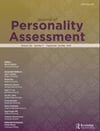The combined use the MMPI-2-RF and the CPI are effective tools for preemployment screening of police and public safety personnel. This is the bottom line of a recently published article in the Journal of Personality Assessment. Below is a summary of the research and findings as well as a translation of this research into practice.

Featured Article | Journal of Personality Assessment | 2019, Vol. 101, No. 5, 544-555
Predicting Postprobationary Job Performance of Police Officers Using CPI and MMPI-2-RF Test Data Obtained During Preemployment Psychological Screening
Authors
Ryan M. Roberts, Law Enforcement Psychological Services Inc.; California School of Professional Psychology
Anthony M. Tarescavage, John Carrol University
Yossef S. Ben-Porath, Kent State University
Michael D. Roberts, Law Enforcement Psychological Services Inc.; University of Connecticut
Abstract
We examined associations between prehire California Psychological Inventory (CPI) and prorated Minnesota Multiphasic Personality Inventory–2 Restructured Form (MMPI–2–RF) scores (calculated from MMPI profiles) and supervisor ratings for a sample of 143 male police officers. Substantive scale scores in this sample were meaningfully lower than those obtained by the tests’ normative samples in the case of the MMPI–2–RF and meaningfully higher in the case of the CPI (indicating less psychological dysfunction). Test scores from both instruments showed substantial range restriction, consistent with those produced by members of the police candidate comparison groups (Corey & Ben-Porath, 2014; Roberts & Johnson, 2001). After applying a statistical correction for range restriction, we found a number of meaningful associations between both CPI and MMPI–2–RF substantive scale scores and supervisor ratings. For the MMPI–2–RF, findings for scales from the emotional dysfunction and interpersonal functioning domains of the test were particularly strong. For the CPI, findings for scales indicating conformity with social norms, integrity, and tolerance were strong, as were the findings for an index indicating risk of termination. Hierarchical regression analyses showed that MMPI–2–RF and CPI scores complement each other, accounting for incremental variance in the prediction of job-related variables over and above each other. Implications of these findings for assessment science and practice are discussed.
Summary of the Research
“In the United States, law enforcement officers are charged with the important task of upholding the laws of federal and local governments and of ensuring the safety of civilians within their jurisdictions. As a means of enforcing the law and protecting citizens, law enforcement officers are bestowed police powers that give them broad authority to use force and to conduct invasive searches and seizures under certain conditions. When this authority is misused, public safety is compromised and public trust in law enforcement is damaged.” (p.544)
“A recent national survey of law enforcement agencies indicates that a psychological evaluation is required by 72% of departments overall and 98% of departments serving at least 25,000 residents.” (p.544)
“Corey (2016) surveyed police psychologists nationwide and found that the most frequently administered test of abnormal psychological functioning was the Minnesota Multiphasic Personality Inventory–2 Restructured Form (MMPI–2–RF), which was used in over 44% of police candidate evaluations, followed closely by the MMPI–2 at 37%. The most frequently administered test of normal psychological functioning was the California Psychological Inventory (CPI), which was used in over 42% of evaluations.” (p.544)
“MMPI–2–RF scores were substantially associated with a number of negative outcomes. For example, focusing on the RRR analyses…, candidates with higher THD, Aberrant Experiences (RC8), Self-Doubt (SFD), and Psychoticism-Revised (PSYC-r) T scores at the preemployment assessment were at greater risk for subsequently being rated by supervisors as abusing sick leave. Of note, the associations between MMPI–2–RF measures of thought dysfunction and problem behaviors converge with past research in this area” (p.553)
“As with the MMPI–2–RF findings, the CPI–PPSR correlational and RRR analyses indicate that CPI–PPSR scale and prediction equation scores are substantially associated with negative outcomes. For example … candidates with higher scores on Dominance (Do) were at greater risk for subsequently being rated by supervisors as having control of conflict problems. This finding aligns with descriptions of individuals with very high Do scores (> 70T) as controlling, domineering, and aggressive in the literature. Lower Socialization (So) scores were associated with increased risk for problems relating with coworkers and with dishonesty. This finding converges with past research on law enforcement candidates indicating that low So scores are associated with being disciplined for behaviors such as insubordination, supervisory problems, and embezzlement of property.” (pp.553-554)
“The incremental validity analyses … establish that the CPI–PPSR and MMPI–2–RF provide unique, complementary information in preemployment assessments of police candidates. Scores on both tests predicted as much as 12% of additional variance in our study criteria (verbal communications problems in the case of the CPI–PPSR adding to the MMPI–2–RF, and citizen relationship problems in the case of the MMPI–2–RF adding to the CPI–PPSR).” (p.554)
Translating Research into Practice
“The findings … are largely consistent with a growing body of literature on the job-relevant correlates of preemployment MMPI–2–RF scores of police candidates, which have been incorporated by Corey and Ben-Porath (2014) in the MMPI– 2–RF Police Candidate Interpretive Report. Based on the RRRs presented in this study, cutoffs of 55T and 60T on scales related to problem behaviors appear to have the most utility.” (p.553)
“Based on the RRRs [re: CPI] presented in this study, cutoffs of 50T, where low scores are associated with negative outcomes, and 70T, where high scores are associated with negative outcomes, appear to have the most utility.” (p.554)
“These results provide support for use of both a measure of abnormal and normal personality functioning in preemployment assessments of police candidates and specifically the MMPI–2–RF and CPI– PPSR. This practice is consistent with the requirements of the California Commission on POST, which, as noted earlier, are frequently emulated in other jurisdictions.” (p.554)
Other Interesting Tidbits for Researchers and Clinicians
“The CPI–434, which is the basis of the CPI–PPSR, consists of 434 true–false items representing concepts that are commonly used to describe and understand human behavior. The CPI–434 contains 20 folk scales that measure features of individuals and interpersonal functioning. These include scales measuring constructs highly relevant to psychological domains of the police officer position, including Dominance (Do), Self-Control (Sc), Sociability (Sy), Social Presence (Sp), Independence (In), Empathy (Em), Responsibility (Re), Socialization (So), Tolerance (To), and Achievement via Conformance (Ac). In addition, the CPI–434 also provides “special-purpose” scales that are also directly relevant to the police officer position including Managerial Potential (Mp), Work Orientation (Wo), Amicability (Ami), Anxiety (Anx), Narcissism (NAR), Leadership (Lp), and Law Enforcement Orientation.
The CPI–PPSR is intended for use as one component of a psychological selection battery for police and other public safety positions. The CPI–PPSR reports the same scale information as obtained in the standard CPI–434, but in addition provides “comparison profiles” that are based on large normative samples of (a) police officer applicants, and (b) police officer applicants who went on to be hired and who successfully maintained employment from 1 to 30 years or more. In addition to these normative comparison features, the CPI–PPSR introduced the Integrity (Itg) scale and eight suitability risk statements, which are not included in the standard CPI– 434. The Itg scale was developed in a study investigating the criterion of having lied about recent illegal drug use in a sample of police officer applicants to a major Midwestern police department. The eight empirically derived CPI–PPSR risk statements include Probability of Involuntary Departure, Probability of Being Rated “Poorly Suited” by Psychologists with Expertise in Public Safety Screening, as well a six risk statements devoted to predicting life history problems in the areas of job performance, integrity, anger management, alcohol use, illegal drug use, and substance abuse.” (p.545)
Join the Discussion
As always, please join the discussion below if you have thoughts or comments to add!






















